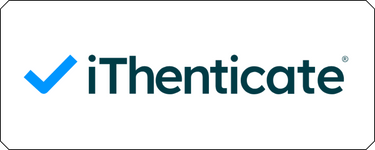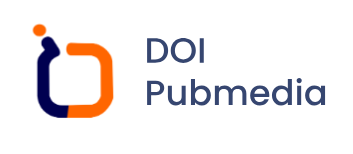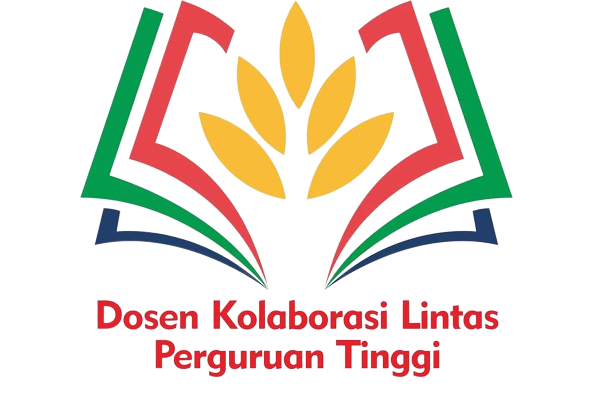Government Performance Evaluation; Case Study in the Cultural Service of Kepulauan Riau Province
DOI:
https://doi.org/10.69812/jgs.v1i2.77Keywords:
Performance, Evaluation, Cultural ServiceAbstract
Government performance evaluation is a critical instrument in achieving good governance. This study aims to evaluate the performance of the Cultural Service of Kepulauan Riau Province by analyzing the achievement of strategic objectives in 2023. A descriptive quantitative approach was employed, utilizing data from the 2023 Government Performance Accountability Report (LAKIP). The analysis focused on key performance indicators, including the enhancement of cultural-based tourism destinations and the preservation of Malay culture. The findings indicate that the economic value of culture achieved 100% of its target, reflecting the successful optimization of local artists as drivers of the creative economy. Furthermore, the cultural expression value reached 95.92%, and the cultural heritage value exceeded the target at 109.28%, demonstrating the effectiveness of preservation programs for both tangible and intangible heritage. However, the evaluation identified challenges such as coordination gaps due to inconsistent government nomenclature, inadequate advocacy for cultural rights protection, and limited use of technology in cultural promotion. The study concludes that the performance of the Cultural Service of Kepulauan Riau Province in 2023 was generally strong, with significant achievements in strategic targets. Nonetheless, improvements are needed in coordination, advocacy, and technological innovation to ensure the sustainability of cultural programs. These findings are expected to serve as a foundation for more effective, efficient, and results-oriented policy development.
Downloads
References
Bahasoan, A. (2024). Public Service Transformation: Innovative Strategies of Ambon City Government Towards Openness and Public Satisfaction. Jurnal Manajemen Pelayanan Publik, 8(2), 345–358. https://doi.org/10.24198/JMPP.V8I2.52436
Behn, R. D. (2003). Why measure performance? Different purposes require different measures. Public Administration Review, 63(5), 586–606.
Bouckaert, Geert., & Halligan, John. (2008). Managing performance: international comparisons. Routledge.
Bovens, M. (2007). Analysing and Assessing Accountability: A Conceptual Framework. European Law Journal, 13(4), 447–468. https://doi.org/10.1111/J.1468-0386.2007.00378.X
Bungin, B. (2015). Analisis data penelitian kualitatif. Rajawali Pers. https://onesearch.id/Record/IOS13916.INLIS000000001009756
DiIulio, J. J., Garvey, G., & Kettl, D. F. (1993). Improving government performance : an owner’s manual. Brookings Institution.
Greene, R. J. (2015). Reward performance? What else? Compensation & Benefits Review, 47(3), 103–106.
Grünewald, R. D. A. (2002). Tourism and cultural revival. Annals of Tourism Research, 29(4), 1004–1021. https://doi.org/10.1016/S0160-7383(02)00005-1
Gunartin, G., Mulyanto, E., & Sunarsi, D. (2020). The role analysis of Waste Bank in omproving the community’s creative economy (Study at Ketumbar Pamulang Waste Bank). Budapest International Research and Critics Institute (BIRCI-Journal): Humanities and Social Sciences, 3(4), 3262–3269. https://doi.org/10.33258/birci.v3i4.1360
James, O., Jilke, S. R., & Van Ryzin, G. G. (2017). Behavioural and experimental public administration: Emerging contributions and new directions. Public Administration, 95(4), 865–873. https://doi.org/10.1111/PADM.12363
Jurnali, T., & Siti-Nabiha, A. K. (2015). Performance Management System for Local Government: The Indonesian Experience: Global Business Review, 16(3), 351–363. https://doi.org/10.1177/0972150915569923
Melkers, J., & Willoughby, K. (2005). Models of performance measurement use in local governments: Understanding budgeting, communication, and lasting efffects. Public Administration Review, 65(2), 180–190.
Mitchell, F. H., & Mitchell, C. C. (2016). Adaptive administration: practice strategies for dealign with constant change in public administration and policy. CRC Press. https://www.routledge.com/Adaptive-Administration-Practice-Strategies-for-Dealing-with-Constant-Change/Mitchell-Mitchell/p/book/9781498737555
Olson, D. J. (2017). Public Port Accountability: A Framework for Evaluation. In Urban Ports and Harbor Management (pp. 307–331). Routledge. https://doi.org/10.4324/9781315169934-14
Ortega, E. M. P., Saez, P. Z., & cortes, E. C. (2010). Can formalization, complexity, and centralization influence knowledge performance? Journal of Business Research, 63(3), 310–320. https://doi.org/10.1016/j.jbusres.2009.03.015
Rahman, F. A., Sunan, N., & Surabaya, A. (2023). Analisis Perkembangan Wisata Halal Di Jawa Timur Sebagai Tempat Destinasi Muslim Global. Ar Rehla: Journal of Islamic Tourism, Halal Food, Islamic Traveling, and Creative Economy, 3(1), 56–66. https://doi.org/10.21274/AR-REHLA.V3I1.7256
Rinaldi, L. (2013). Stakeholder engagement. Integrated Reporting: Concepts and Cases That Redefine Corporate Accountability, 95–109. https://doi.org/10.1007/978-3-319-02168-3_6/COVER
Rusdi, A., Pilcher, R. A., & Perrin, B. (2015). Implementing performance measurement systems: Indonesian local government under pressure. Qualitative Research in Accounting & Management, 12(1), 3–33. https://doi.org/10.1108/QRAM-03-2013-0013
Sianta, J. L., Susena, K. C., & Nengsih, M. K. (2020). The Analysis of Community Satisfaction Index (SMI) On Public Services In Sidomulyo Kelurahan Office Bengkulu City. Jurnal Ekonomi, Manajemen, Akuntansi Dan Keuangan, 1(3), 172–181. https://penerbitadm.pubmedia.id/index.php/jurnalemak/article/view/26
Sugiyono. (2012). Metode penelitian kuantitatif, kualitatif, dan R&D. Alfabeta.
Thurmond, V. A. (2001). The Point of Triangulation. Journal of Nursing Scholarship, 33(3), 253–258. https://doi.org/10.1111/J.1547-5069.2001.00253.X
Uwizeyimana, D. E. (2020). Monitoring and Evaluation in a Chaotic and complex Government Interventions’ Environment. International Journal of Business and Management Studies, 12(1), 1–17. https://doi.org/10.4102/APSDPR
Zunaidi, A., Nofirman, N., Juliana, J., & Wurarah, R. N. (2022). The Impact of the Development of Cultural Tourism on the Cultural, Economic, and Social Aspects of Local Communities. Dinar: Jurnal Ekonomi Dan Keuangan Islam, 9(2), 88–105. https://doi.org/10.21107/DINAR.V9I2.14233
Downloads
Published
How to Cite
Issue
Section
License
Copyright (c) 2024 Yoli Ananda, Wayne Elric, Riski Rusnadi

This work is licensed under a Creative Commons Attribution-ShareAlike 4.0 International License.
You are free to:
- Share — copy and redistribute the material in any medium or format for any purpose, even commercially.
- Adapt — remix, transform, and build upon the material for any purpose, even commercially.
- The licensor cannot revoke these freedoms as long as you follow the license terms.
Under the following terms:
- Attribution — You must give appropriate credit, provide a link to the license, and indicate if changes were made . You may do so in any reasonable manner, but not in any way that suggests the licensor endorses you or your use.
- ShareAlike — If you remix, transform, or build upon the material, you must distribute your contributions under the same license as the original.
- No additional restrictions — You may not apply legal terms or technological measures that legally restrict others from doing anything the license permits.















